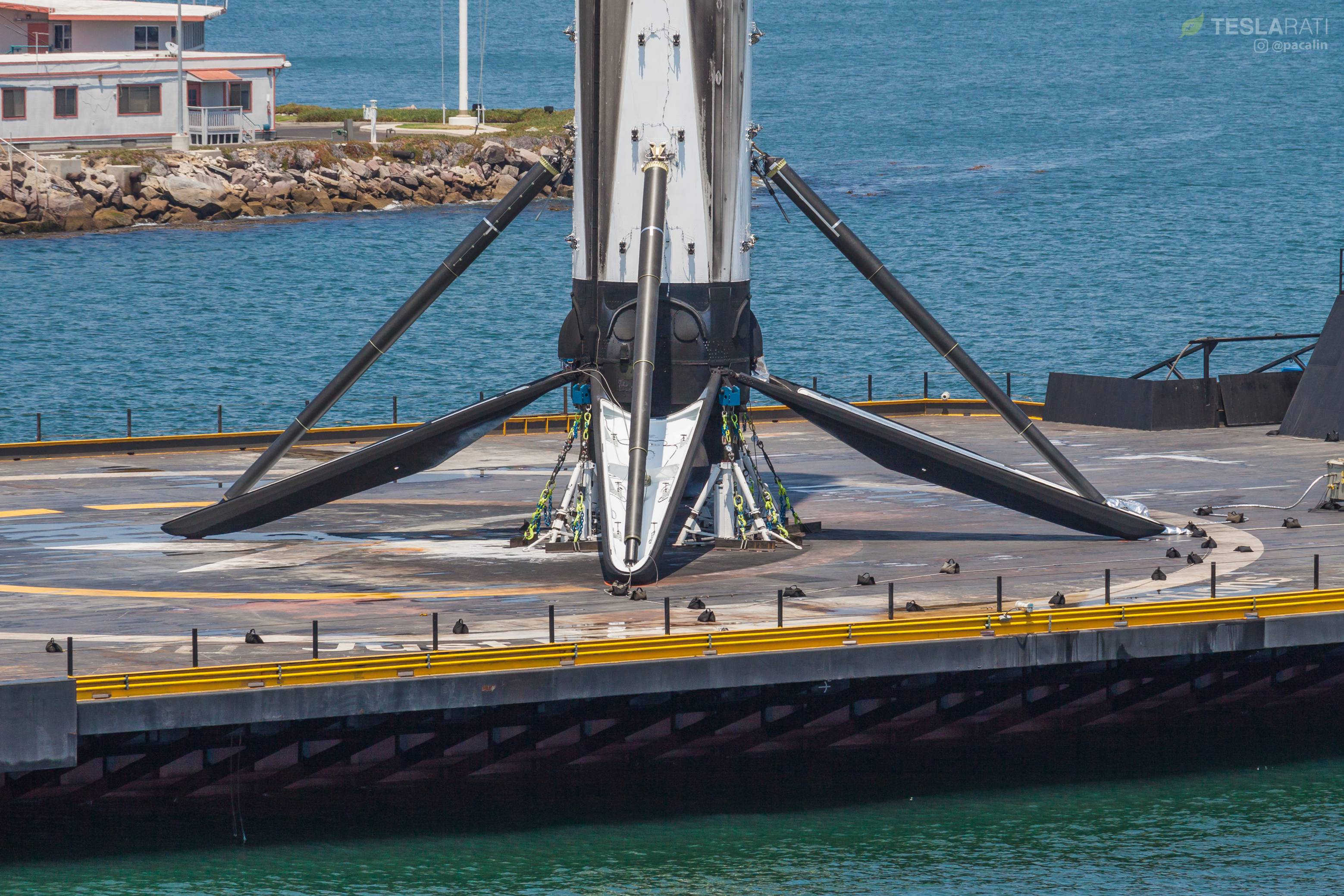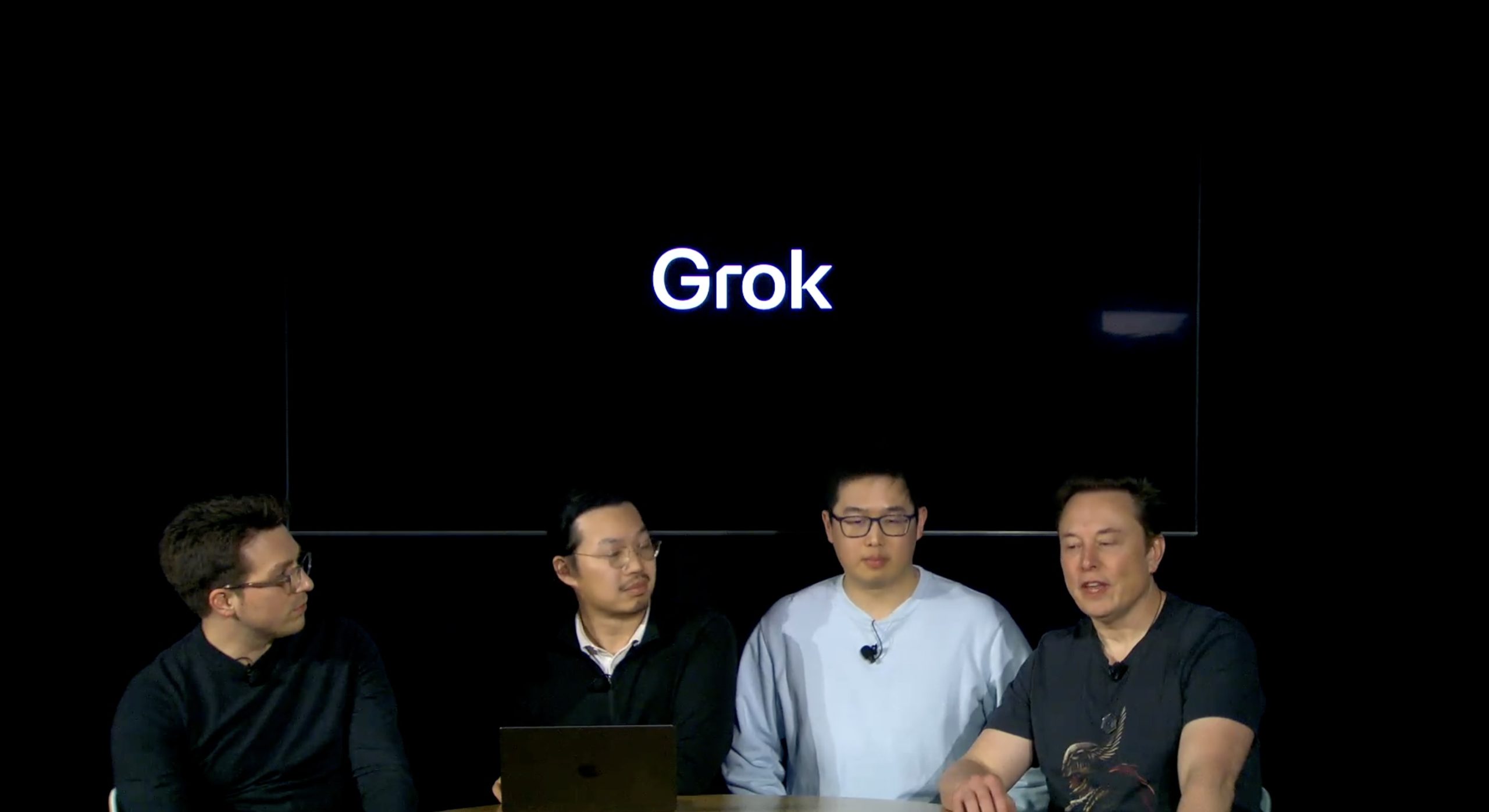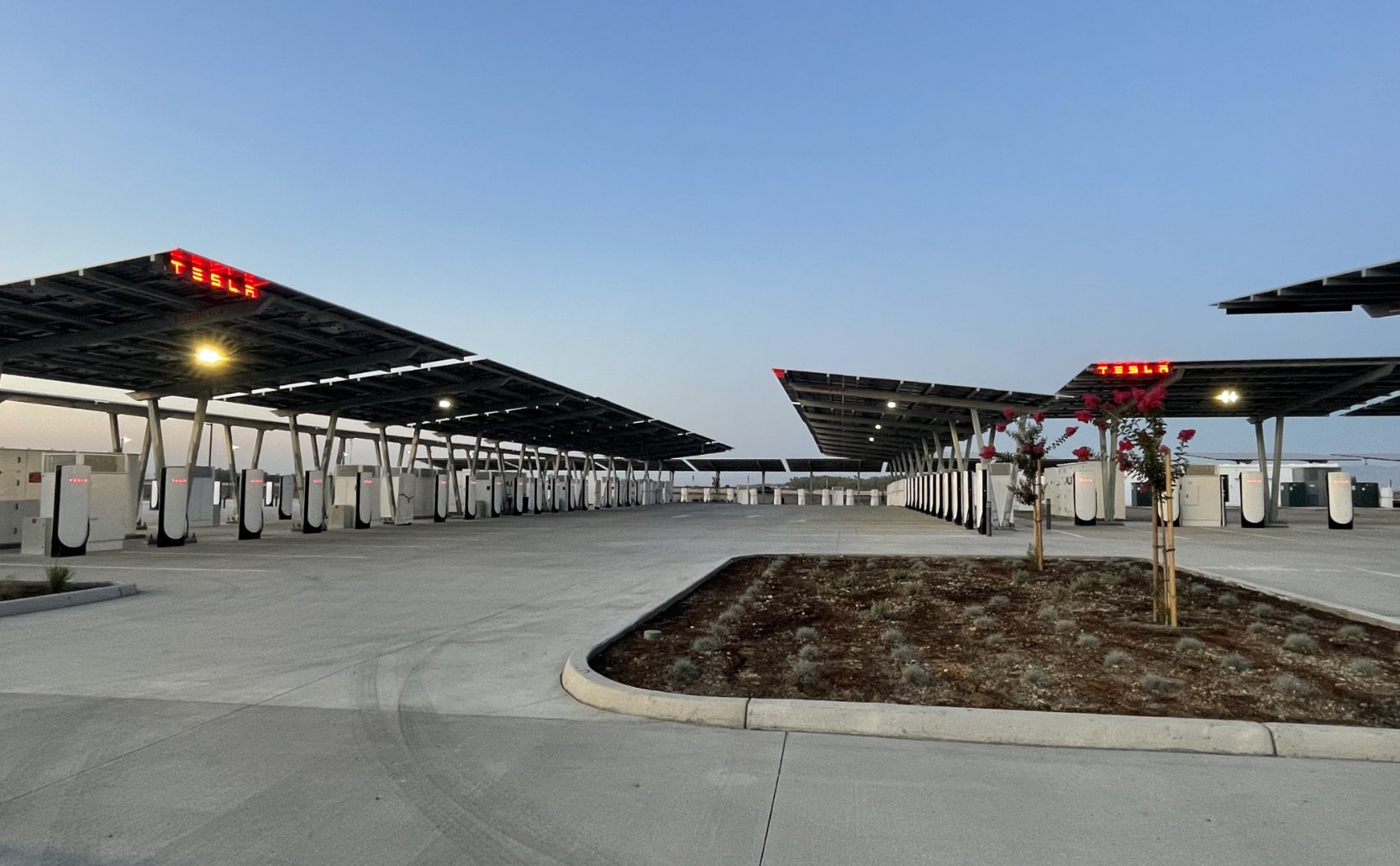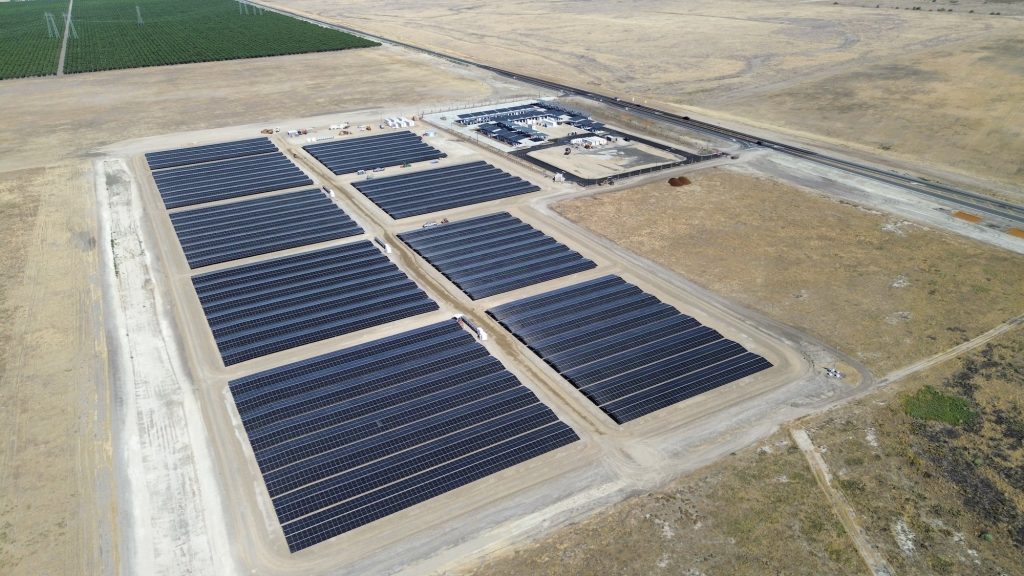

News
SpaceX’s second dedicated USAF mission targets Dec. 2018 for GPS satellite launch
One of a number of 2018 SpaceX missions pushed into this year’s fourth quarter, SpaceX’s second-ever dedicated US Air Force payload is tracking towards a tentative mid-December launch, hopefully kicking off the deployment of the first ten third-generation GPS (Global Positioning System) satellites.
Set to launch the first and second GPS satellites on upgraded Falcon 9 Block 5 rockets, SpaceX and the USAF could potentially decide to fly one or several of the company’s contracted GPS missions on flight-proven boosters.
Air Force reports first GPS III spacecraft — nicknamed “Vespucci” in honor of Italian explorer Amerigo Vespucci — has arrived in Titusville to prepare for December launch on SpaceX Falcon 9. pic.twitter.com/WbJgnyYWgl
— James Dean (@flatoday_jdean) August 22, 2018
Designed and built by Lockheed Martin, each of the first group of a dozen satellites will weigh approximately 3900 kg (8900 lb) and will be placed in a circular orbit 20,000 km (12,500 mi) above Earth’s surface, resulting in one completed orbit every 12 hours. Both as a result of each satellite’s significant mass and orbit requirement and the desire to spread risk over multiple launches, the first eight GPS Block IIIA spacecraft will ride into space on their own dedicated launch vehicles – five aboard Falcon 9, one on a ULA Delta IV, and the rest yet to be determined.
SpaceX’s Falcon 9 was certified to launch national security-sensitive USAF payloads in May 2015 after spending years fighting for the reintroduction of competition into the Department of Defense’s rocket launch procurement apparatus, killed back in the mid-2000s when Lockheed Martin and Boeing merged their space subsidiaries into the United Launch Alliance despite protests from NASA and some in the DoD.
SN Military Space | Air Force wants new GPS in orbit before year’s end • DoD big on OTAs • Space Force by 2020 a long shot – https://t.co/SKTAuJefRy pic.twitter.com/VV0JZi1hFD
— SpaceNews (@SpaceNews_Inc) August 28, 2018
That launch is now aiming for December 15th, 2018, although such a specific date nearly three and a half months out should be treating as purely for planning purposes. Originally planned to launch on a ULA Delta IV rocket, the USAF decided (for unknown reasons) to switch the order of launch, making SpaceX the launch provider for the first and second spacecraft, with ULA following up on the third launch. In March 2018, SpaceX was additionally awarded one more GPS IIIA launch with the option for two more, at a total contract cost of roughly $290 million or ~$97 million apiece. Of the remaining four satellites to be launched after Space Vehicle 06 (SV06) reaches orbit, contracts have yet to be competed, although that process is likely to begin within a year or so.
- It’s currently unclear whether B1046 or B1048 will become the first SpaceX rocket to fly three times. (Tom Cross)
- The second Block 5 booster, B1047, debuted at LC-40 on July 21. (Tom Cross)
- The scale of Falcon Heavy. (Photo: Tom Cross)
Barring any unforeseen developments or anomalies, SpaceX’s December launch of GPS IIIA SV01 ought to kick off a series of Falcon 9 GPS missions every 4-6 months between now and 2021 or 2022. After SV08 is launched sometime in those final years, the US Air Force will open competition slightly further, allowing launch providers SpaceX, ULA, and perhaps even Blue Origin to offer multi-satellite launches on their more powerful rocket offerings, including Falcon Heavy, heavier Atlas 5 variants, and New Glenn.
Beginning in March 2019, largely symbolic but still revolutionary language to be included in 2019’s defense procurement authorization may explicitly require the USAF to explain before Congress – in the event that a launch contract does not allow a reusable rocket to compete – why an expendable launch vehicle was privileged. Currently NET March 2019 as well, SpaceX’s third dedicated USAF launch – STP-2 on Falcon Heavy – is being set up primarily to help the USAF certify SpaceX’s newest heavy-lift rocket for national security launches.
For prompt updates, on-the-ground perspectives, and unique glimpses of SpaceX’s rocket recovery fleet check out our brand new LaunchPad and LandingZone newsletters!
Elon Musk
Elon Musk confirms Grok 4 launch on July 9 with livestream event
The rollout will be accompanied by a livestream at 8 p.m. Pacific Time.

Elon Musk has officially confirmed that Grok 4, the latest version of xAI’s large language model, will launch on July 9. The rollout will be accompanied by a livestream at 8 p.m. Pacific Time, hosted on xAI’s official account on X.
xAI goes straight to Grok 4
Back in May, leaks indicated that xAI was getting ready to ship Grok 3.5. Considering Musk’s recent comments, however, it appears that the artificial intelligence startup would be focusing on the large language model’s fourth iteration instead. As noted in a Financial Express report, users on X have sighted references to Grok 4 in the lead up to the update’s launch, such as “grok-4-prod-mimic” and “Grok 4 Code.”
Musk’s Grok 4 announcement comes as AI competition intensifies between major players including OpenAI, Google, and xAI. With Musk’s Colossus supercomputer fully operational in Memphis, xAI appears to be accelerating its AI product roadmap.
Musk pushes Grok toward political neutrality
Grok 4’s launch also follows a recent controversy involving political bias, as noted in a CNN report. Last week, Grok responded to a user on X stating that political violence in the U.S. since 2016 had come more from the political right than the left. The chatbot noted in a later reply that its answer was based on information from sources like Reuters, the Journal of Democracy, and University of Maryland studies.
Musk stated that Grok’s response was a “major fail.” “Major fail, as this is objectively false. Grok is parroting legacy media. Working on it,” he wrote in a post on X. By the end of June, Musk noted that he was “grinding all night with the xAI team” and that they were making “good progress.” He also stated that the model “Will be called Grok 4. Release just after July 4th. Needs one more big run for a specialized coding model.”
News
Tesla opens massive solar Supercharger station in California
The Supercharger opened to customers ahead of Fourth of July weekend, while Tesla continues phase two of construction on the site.

Tesla has officially launched the first several Supercharging posts at a massive station in California, notably including solar canopies and grid-scale batteries to offer completely renewable charging.
Last week, Tesla announced on X that it opened the first 84 Supercharger stalls of a planned 168-stall station in Lost Hills, California. Additionally, the massive Supercharger project features 11MW of solar canopies and 10 Megapack batteries for off-grid charging powered entirely by solar energy.
Tesla completed the first phase of the project just days ahead of the busy Fourth of July holiday weekend, adding that initial construction took just eight months. In addition to the remaining charging stalls, Tesla says it’s building a set of lounge areas, renderings of which can be seen below alongside current photos of the site.
Notably, the site also includes V4 charging posts for the company’s latest available charging speeds, and it’s located near the busy junction between I-5 and Highway 46 in Kern County.
“Thank you [Kern County] and [PG&E] for collaboration and approvals,” Tesla wrote in a follow-up post.

Credit: Tesla Charging | X

Credit: Tesla Charging | X

Credit: Tesla Charging | X

Credit: Tesla Charging | X
Tesla Supercharger Maps for North America, Europe, and Asia pic.twitter.com/0U5r0XRPyo
— TESLARATI (@Teslarati) July 2, 2025
READ MORE ON TESLA SUPERCHARGERS: Tesla launches ultra-fast V4 Superchargers in China for the first time
Testing at the LA Diner, plus Musk update on potential Tesla solar Gigafactory
The huge Tesla Supercharger station completed phase one of construction fairly quickly, especially given how long Tesla has been working on its unique Los Angeles diner, drive-in, and Supercharger location. Still, the company was seen performing some testing at the nearly-completed charging station earlier this month, and will reportedly be holding a job fair.
Elon Musk also responded on Monday morning to a post on X, suggesting that Tesla is “thinking about” building a U.S.-based solar Gigafactory in order to help support increased power needs with AI growth, and to bolster domestic solar production.
Tesla is building a new UFO-inspired Supercharger in the heart of Alien country
News
Tesla driver walks away from major accident with minor injuries
The driver sustained only minor injuries, and the exact cause of the crash remains under investigation.

The driver of a Tesla Model Y survived and walked away from a harrowing accident on Monday in California, only sustaining minor injuries despite the vehicle being impaled by a guardrail.
On Monday morning around 4:34 a.m., the Los Banos division of the California Highway Patrol (CHP) responded to the accident on I-5 near Panoche Road, involving a 23-year-old in a Tesla Model Y. According to a post on social media, the driver veered off the road for unknown reasons in the northbound lane, before crashing directly into the guardrail and impaling the vehicle.
You can read the full message and photos from Los Banos CHP below, as were shared in a Facebook post on Monday afternoon.
This morning a Tesla model y was traveling in the #1 northbound lane of I-5 north of Panoche Rd. For unknown reasons driver allowed V-1 to veer off the roadway, travel through a dirt center divide, and crashed into the fixed metal guardrail. Lucky for the driver he only sustained minor injuries and was able to walk away. Driving a vehicle requires 100% attention to the road. Avoid distractions and focus on driving.

Credit: CHP Los Banos (via Facebook)

Credit: CHP Los Banos (via Facebook)

Credit: CHP Los Banos (via Facebook)
In a statement to SFGate, CHP officer Myles Anderson said that the driver only sustained minor injuries, while no arrests are made and drugs and alcohol are not suspected to have been involved. The report also notes that Tesla’s “cruise control and lane assistance features” were activated, according to Anderson. However, it’s not entirely clear if this is referring to Supervised Full Self-Driving (FSD), or to the cruise control and lane assist features baked into Autopilot.
At the time of writing, CHP has not yet responded to Teslarati’s request for clarification and additional details on the matter.
Tesla Crash Safety Ratings across its lineup: pic.twitter.com/ny30R7ceji
— TESLARATI (@Teslarati) July 1, 2025
READ MORE ON TESLA SAFETY: Tesla rolls out crucial new safety feature aimed at saving children
The news comes after Tesla has touted its vehicles as incredibly safe for many years. In December, for example, the company highlighted receiving top safety scores from regulators on four different continents throughout the world, including from the National Highway Traffic Safety Administration (NHTSA) and the Insurance Institute of Highway Safety (IIHS) in the U.S.
Tesla has also listed the goal of making its vehicles the safest on the road throughout the years, both in the overall design of its vehicles and in its Autopilot and Full Self-Driving (FSD) programs.
Tesla Model 3 ranks as the safest new car in Europe for 2025, per Euro NCAP tests
-

 Elon Musk1 week ago
Elon Musk1 week agoTesla investors will be shocked by Jim Cramer’s latest assessment
-

 News2 weeks ago
News2 weeks agoTesla Robotaxi’s biggest challenge seems to be this one thing
-

 News2 weeks ago
News2 weeks agoWatch the first true Tesla Robotaxi intervention by safety monitor
-

 Elon Musk2 weeks ago
Elon Musk2 weeks agoA Tesla just delivered itself to a customer autonomously, Elon Musk confirms
-

 News2 weeks ago
News2 weeks agoTesla Robotaxi rollout proves that Elon Musk still delivers, even if it’s late
-

 Elon Musk2 weeks ago
Elon Musk2 weeks agoxAI welcomes Memphis pollution results, environmental groups push back
-

 Elon Musk2 weeks ago
Elon Musk2 weeks agoElon Musk commends Tesla team on successful Robotaxi launch
-

 Elon Musk2 weeks ago
Elon Musk2 weeks agoElon Musk confirms Tesla Optimus V3 already uses Grok voice AI























